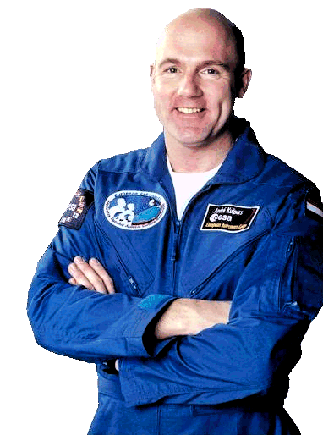
|
SAMPLE
|

|
Abstract: Microbes are almost everywhere on Earth. There are good microbes and bad microbes. Normally, we use the good ones, for instance for wine and cheese making or wastewater treatment, and we don't worry that the bad ones may make us sick. This changes when we find ourselves in a closed environment, like a space ship. There we like our surroundings to be clean and microbiologically save, since we cannot escape from it. The problem is that wherever we travel we will bring our microbes, also into space. Our intestinal tract contains 1014 (1 with 14 zero's) microbes. Also our skin and oral cavity contain a considerable number of microbes,1012 and 1010, respectively. Part of these microbes are able to grow on the surfaces in the space ship. Most of these are harmless or beneficial to the human health. However, a limited number of these intestinal microbes has dangerous properties. They are pathogenic. It is believed that under the weightlessness conditions in space, these microbes become even more dangerous and may be a threat to the astronauts. Therefore, we want to be able to control the numbers of these bad microbes. On the other hand microbes can be useful in space ships. Especially on long missions, microbes help us to purify air, recycle water and in a later stage to produce food and recycle all resources as they do on Earth, in order to make a complete ecosystem. But before we do that we want to make sure that no bad microbes get a chance to threaten the astronauts health. We want to figure out what the best way is to monitor microbial contamination of the Russian segment of the International Space Station (ISS). To do this samples will be taken in the space station by the Dutch astronaut André Kuipers on specific spots, especially in the living quarters of the crew. We think that the main source of these microbes are humans and therefore the astronaut will sample himself as well. And we will bring a E. coli bacterium to the ISS inside a little container and let it adapt to microgravity conditions. These experiments will show how microbes carried into space by humans will end up on surfaces and equipment in the space station. It will also show how these microbes survive, adapt and possibly increase in numbers in the space station. In addition, it will indicate if there are hot spots, places where microbes grow most easily. This will make it possible to take appropriate measures for space hygiene, to keep the space station clean and to keep the astronauts healthy in order to fulfill their mission.
Address corresponding
author:
Dr. Hermie Harmsen,
Department of Medical Microbiology, University of Groningen, Hanzeplein
1,9713 GZ Groningen, The Netherlands.
Tel. (31) 50 3633501, Fax (31) 50 3633528 E-mail: h.j.m.harmsen@med.rug.nl
External Co-Investigators:
Paolo Landini, Department
of Microbiology, EAWAG, Ueberlandstrasse 133, 8600 Duebendorf, Switzerland,
Tel. (41) 1 823 5519, Fax (41) 1 823 5547 E-mail: landini@eawag.ch.
Internal : Jaap van der Waarde and Janneke Krooneman, Bioclear Environmental
Biotechnology, Rozenburglaan 13c, PO Box 2262, 9704 CG Groningen, The Netherlands
Tel: (31) 50 5718455 Fax: (31) 50 5717920 E-Mail: waarde@bioclear.nl
Payload developer: Luc van den Bergh, Dutch Space, P.O.Box 32070, 2303DB
Leiden, The Netherlands, Tel: (31) 71 5245 806, Fax: (31) 71 5245 999, E-mail
l.vd.bergh@dutchspace.nl.